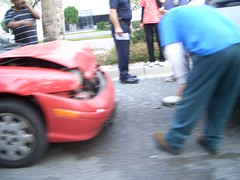You have the car you want, now you must decide on the insurance coverage you need. Deciding on the right type of car insurance can be very confusing, but important. Your amount and type of protection depends on the type of coverage you purchase.
Be careful when choosing coverage. Car insurance terminology can be misleading. For example, full coverage insurance isn't truly full coverage. It usually means physical damage coverage. Full coverage insurance is usually a combination of collision and comprehensive coverage. Collision insurance covers damage to your car caused by a collision with another object. Comprehensive insurance covers damage to the insured car from theft, broken glass, vandalism, and weather damage.
Your insurance policy should cover the costs of repairing your car after you pay your deductible, which is decided when you purchase your coverage. For a lower payment, choose a higher deductible and vice versa.
Full coverage usually covers towing, rental reimbursement, uninsured motorist coverage (which is when an uninsured driver damages the insured car), and medical payment coverage. All of these are subject to the specific insurance company's coverage.
When choosing your car insurance, consider the condition of your car. For older cars, full coverage might not be the most affordable solution, especially if the cost of the insurance exceeds the value of your car. However, if your car were new, full coverage would be the best coverage because it would cover repairing or replacing the car.
Once you have your car, you need to take care of it by buying the right type of insurance. With full coverage insurance, you get the protection offered by collision coverage and comprehensive coverage. With all insurance policies, make sure you read the terms and conditions. All of them can vary on specific coverage and limitations.
Your insurance policy should cover the costs of repairing your car after you pay your deductible, which is decided when you purchase your coverage. For a lower payment, choose a higher deductible and vice versa.
Full coverage usually covers towing, rental reimbursement, uninsured motorist coverage (which is when an uninsured driver damages the insured car), and medical payment coverage. All of these are subject to the specific insurance company's coverage.
When choosing your car insurance, consider the condition of your car. For older cars, full coverage might not be the most affordable solution, especially if the cost of the insurance exceeds the value of your car. However, if your car were new, full coverage would be the best coverage because it would cover repairing or replacing the car.
Once you have your car, you need to take care of it by buying the right type of insurance. With full coverage insurance, you get the protection offered by collision coverage and comprehensive coverage. With all insurance policies, make sure you read the terms and conditions. All of them can vary on specific coverage and limitations.



